The Surprising State of the WAN
Company research reports typically depend upon surveys of preselected customers (rather than random respondents) and lack any basis on real traffic analysis, thus making their results suspect. So when a research report is based on objective hard data, it’s worth taking notice – especially if there are surprising insights.
Aryaka’s 2017 State of the WAN is just such a report. Aryaka’s global SD-WAN is built on a multi-tenant, private network that guarantees latency, throughput, and application performance to its global customers. It also offers globally distributed network operations centers, putting it in a position to have insights into global wide-area network (WAN) traffic patterns and trends that would be difficult to obtain elsewhere.
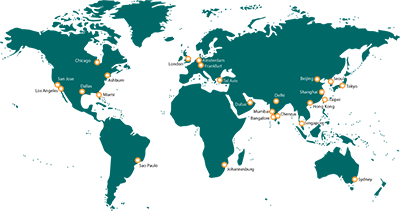
Aryaka’s Global POP Footprint
MATURING USE OF PROTOCOLS
The first such remarkable result: about half the traffic on the WAN consists of HTTPS and HTTP, up from about 44% a year ago. While it’s true that these protocols account for Web traffic generally, what makes these numbers remarkable is what they say about traffic to the cloud.
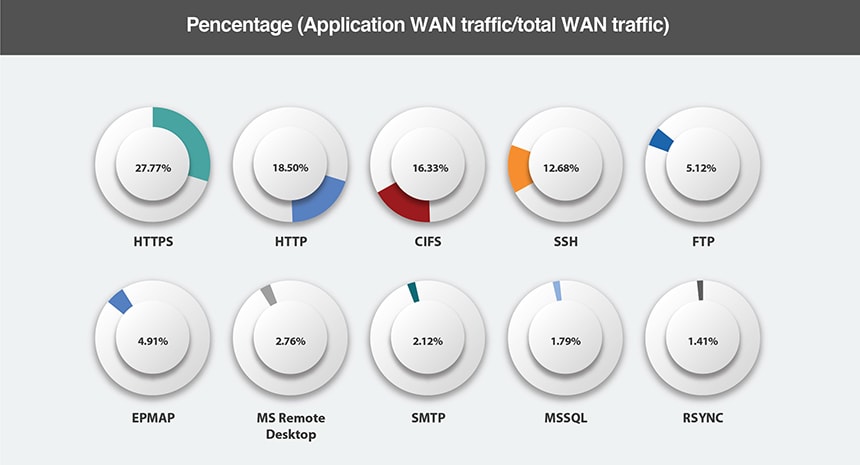
Traditionally, companies use WANs to connect offices to one another, but with the rise of cloud computing, WAN traffic increasingly represents home office to cloud or branch office to cloud traffic – both of which are exploding.
Furthermore, such cloud traffic also includes RESTful interactions, as the vast majority of RESTful API calls are over HTTP or HTTPS. Compared to such API-based interactions, Web interactions typically involve the exchange of smaller data payloads. The fact that HTTP and HTTPS are growing so quickly, in contrast, indicates cloud-based interactions with higher data volumes.
The next surprising result is that the only two types of traffic that experienced a spike in overall traffic numbers as compared to 1996 are HTTPS and SSH, the latter protocol representing secure command line sessions.
In fact, HTTPS and SSH are the only two protocols on the list that have security built in. All of the others, including insecure HTTP as well as CIFS (remote file access and printing for Windows), FTP, and even SMTP (email) experienced dramatic drops in volume.
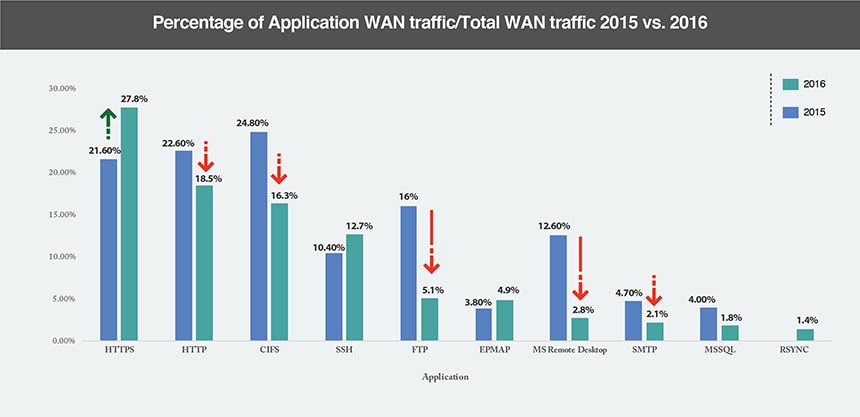
The lesson here is that security is becoming an increasingly important criterion for corporate selection of WAN protocols – dramatic enough that even with the overall growth of traffic, insecure protocol use continues to drop.
REGIONAL SURPRISES
The growth in WAN traffic and the growth in traffic speeds is a global phenomenon – an unsurprising result. What is surprising, however, is that while speed increases are permeating the developed world, the Middle East is still struggling with limited bandwidth and overall WAN performance.
Aryaka uses a specialized approach to determine the response time between any two cities. Its data uncovered the fact that links between various global centers and Dubai experience the most variability over time, as compared to other global business centers. For example, traffic between London and Dubai varied by 181%, as compared to say, London to Bangalore, which experienced a variability of only about 13%.
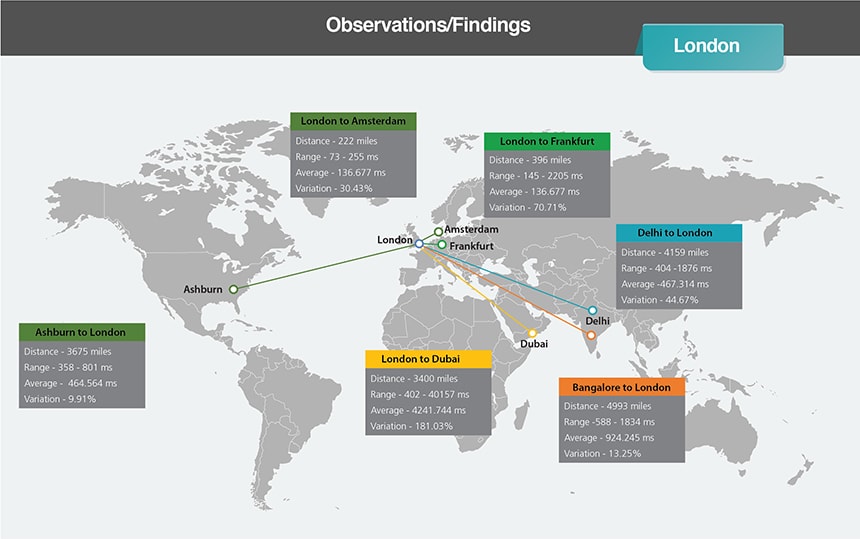
Connections to London weren’t the only problematic routes, as the variability of Dubai to Mumbai, Singapore, and Dallas were all well over 100% as well, indicating the issue was with the Middle East endpoints.
The reason that Middle East connection issues are surprising is because the area – Dubai in particular – is a global business center with plenty of financial resources, as well as a long-standing commitment to investing in its infrastructure. Given the importance of fast networks to today’s global business environment, there is no obvious reason why the Middle East would be so affected.
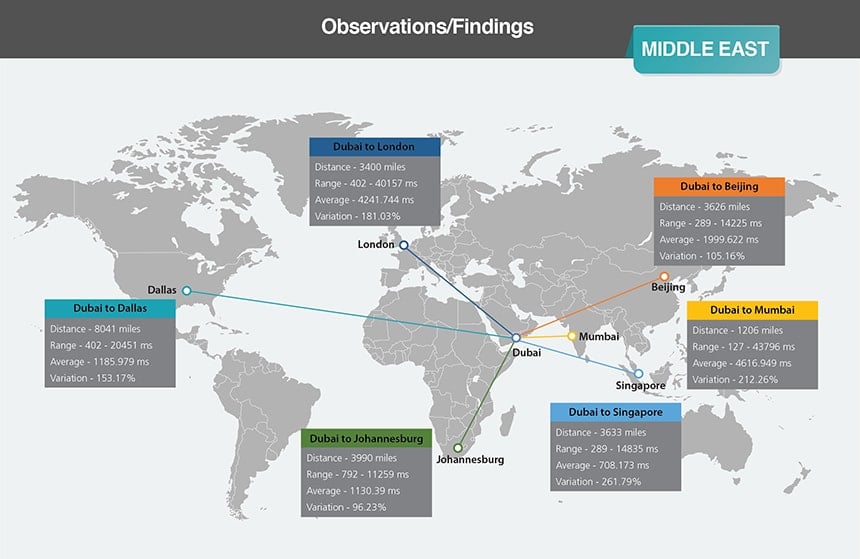
One guess: the most likely reason for this result is that the demand for connectivity is so great that it exceeds the supply, even though the infrastructure needed to support the demand should have been sufficient.
The Persian Gulf area is somewhat of an Internet cul-de-sac, as all primary Internet cabling routes exit the gulf through the Strait of Hormuz, since no overland routes are practical in the region. This bottleneck, combined with rapidly growing demand, may account for the Middle East’s connectivity issues.
THE WAN IS MOVING AWAY FROM MPLS
Leased line private connectivity , such as MPLS, is an older technology that’s quite a bit more expensive than broadband public Internet. Given the corresponding relatively small growth in demand for MPLS, it’s unlikely that any MPLS provider will seek to revamp the older protocol to make it more competitive.
The increasing reliance on broadband relative to MPLS is also an important factor in the rise of secure protocols like HTTPS and SSH. After all, security has always been the primary business motivation for using the more expensive leased lines.
Now that the range of security solutions for public Internet traffic are increasing and maturing, even heavily regulated enterprises are becoming more comfortable with broadband-based WANs.
Copyright © Intellyx LLC. Aryaka is an Intellyx client. At the time of writing, none of the other organizations mentioned in this article are Intellyx clients. Intellyx retains full editorial control over the content of this paper. Image credit: Aryaka.
- Accelerate CAD/CAM Performance
- Improve Zoom Conferencing Performance
- Calypso Embraces a SaaS-first Strategy
- CallisonRTKL Transforms their WAN
- Kleinfelder Improves Application Performance
- Teradyne Transforms their WAN
- SAP web application performance
- Kleinfelder Improves Application Performance
- Industrial Manufacturing Company Transforms WAN









